Do you want to make a luminary to accent your decor, but you want to keep the costs down? David does it with budget materials from the hardware store!
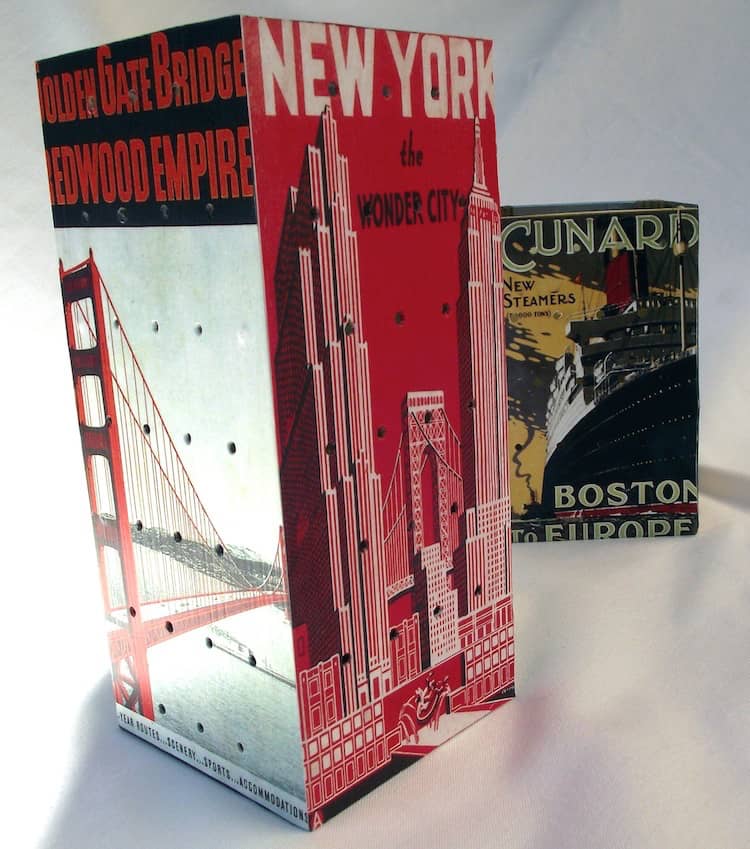
Desperately seeking a cool and functional lighting option for your space? Man Podger David has a new tutorial for you – make a luminary on a budget: with hardware store goodies! Most of you don’t know this, but I’m really into mood lighting.
I’m not a big fan of bright light. I’m straight out of the Twilight series, and I think it’s because I grew up in Seattle. The great thing about these luminaries is that they are for vampires and non-vampires alike. They give off a very subtle and pretty glow that isn’t overwhelming.
I need to make about a hundred, because my friends would love them for gifts. Here’s the tutorial, straight from David.
I wanted to create some kind of decorative luminary for a centerpiece, but I needed it to be very affordable and customizable. If you’ve decorated candle holders before, I think you’re going to like this idea. You can apply it to a variety of surfaces.
So wandering the hardware store aisles (it’s what I do) I found some thin steel plates in the building supplies section.
They are used for connecting beams and things together but, they are affordable ($.88!) and come in a wide range of sizes – and they have holes in them.
Perfect!
How to Make Luminaries
For these DIY candle holders you will need:
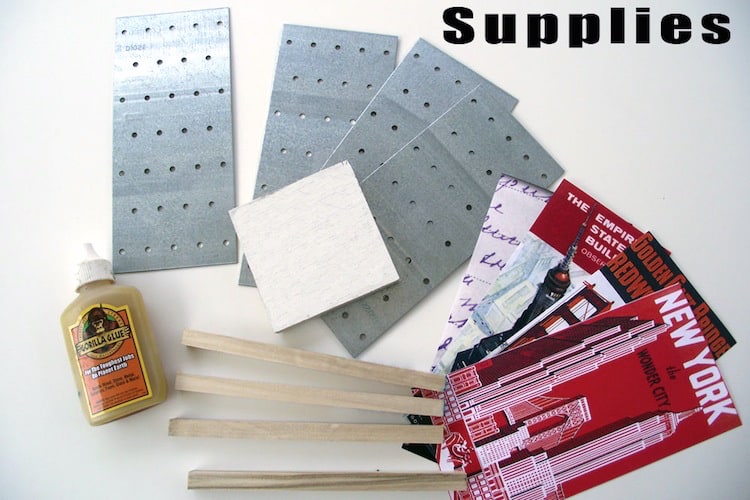
- 4 plates – size of your choosing
- 4 square dowels cut to length
- 1 piece of scrap wood for the base
- Gorilla glue
- Mod Podge Matte and brush
- Paper
- Toothpick
And some optional items include:
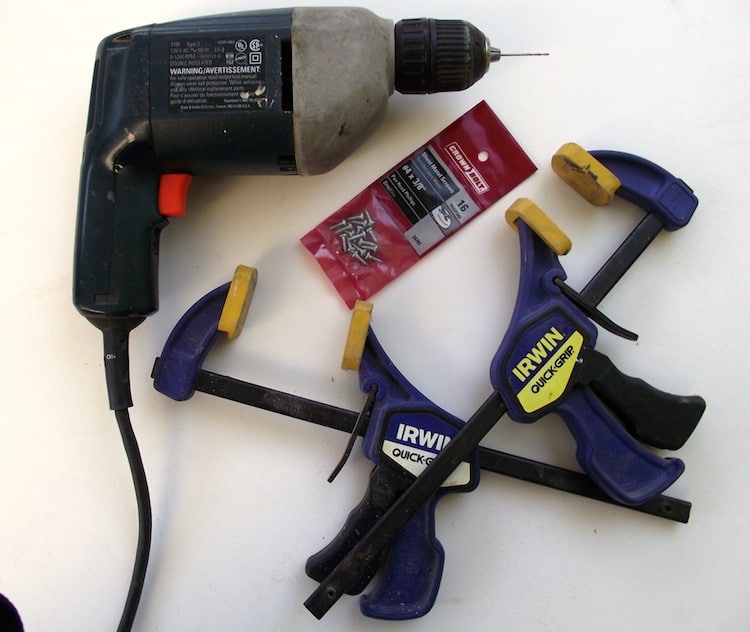
- Clamps (optional)
- Drill (optional)
- Teeny tiny screws (optional)
Step One – Cutting the Base
I cut my base so that the steel plates could overlap at the corners like this diagram.

In my case, my plates were 3 1/8th” wide, so my base was 3 1/8th” x 3 1/16” square.
Step Two – Cutting the Dowels
I needed the dowels to rest on the base but not stick out the top. So, I measured the height of the steel plate (7”) and then subtracted the depth of the base (1/2”) which left me with 6 ½” inches. I then shaved off another ¼” inch – so each dowel was 6 ¼” long.
Step Three – Attaching the Dowels
Using the Gorilla Glue, I attached the dowels to two of the plates. I used the base as a guide to make sure they were at the right height.
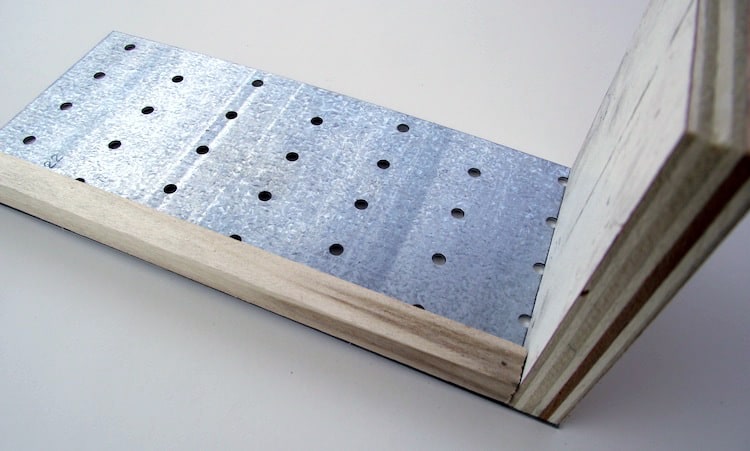
TIP: The glue against the metal is slippery at first – I found that if I let it sit for a few minutes to get tacky I could make sure it was in the right place and then pile some weight on top to ensure a good bond without anything slipping.
I repeated the process with another plate and the remaining two dowels, so I ended up with these four pieces:
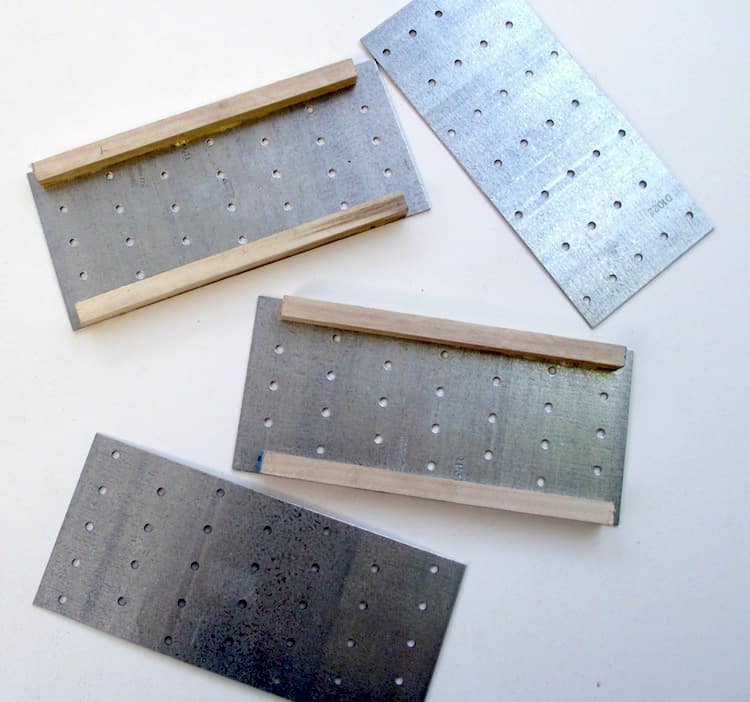
Step Four – Assemble the Sides
I then glued the sides with the dowels to the base (this is where a clamp comes in handy).

With the luminary still resting on its side, I placed one of the plates down on top and marked the spots where the holes aligned with the dowels.
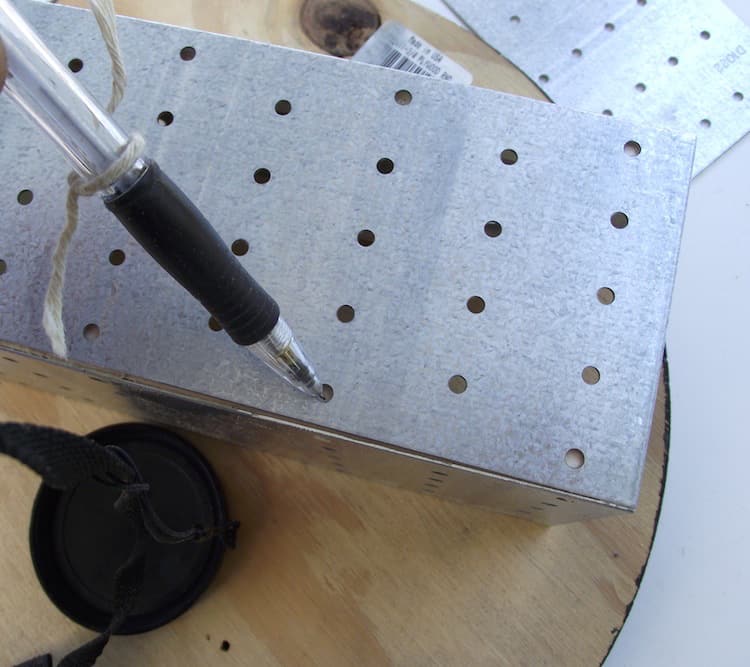
After that I drilled pilot holes to prevent the wood from splitting.
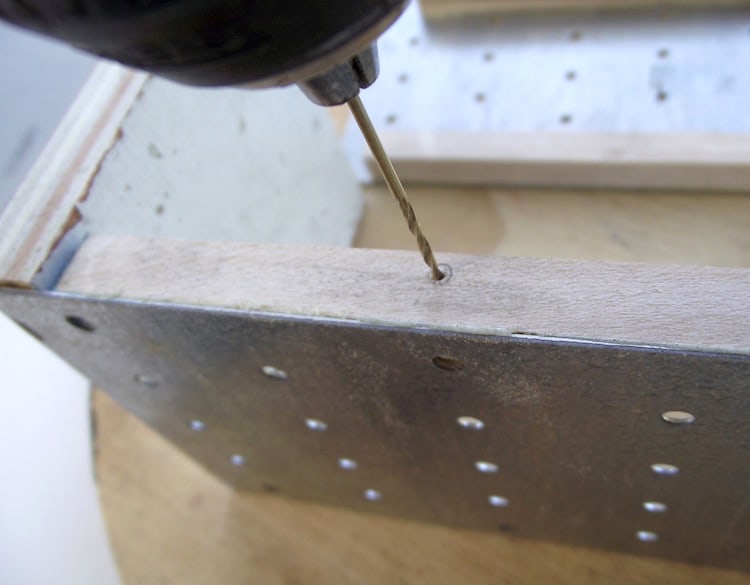
I then glued the plate to the dowels and base and, using my teeny tiny screws, screwed the plate to the dowels. (You’ll take the screws out again – they just serve to hold the plate in place while the glue dries).
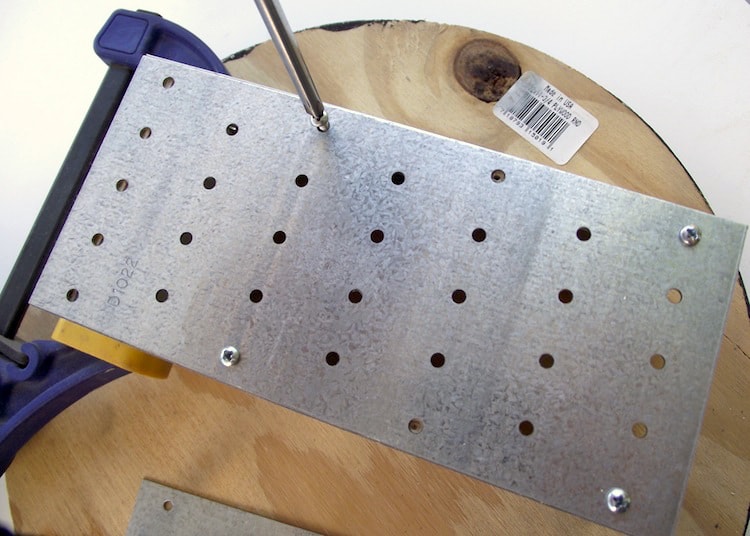
Then I flipped it over and did the same on the other side, adjusted my clamps and viola:

I made a cheese grater! . . . well, that’s what it looked like to me. I set it aside to dry.
Step Five – Mod Podge Away
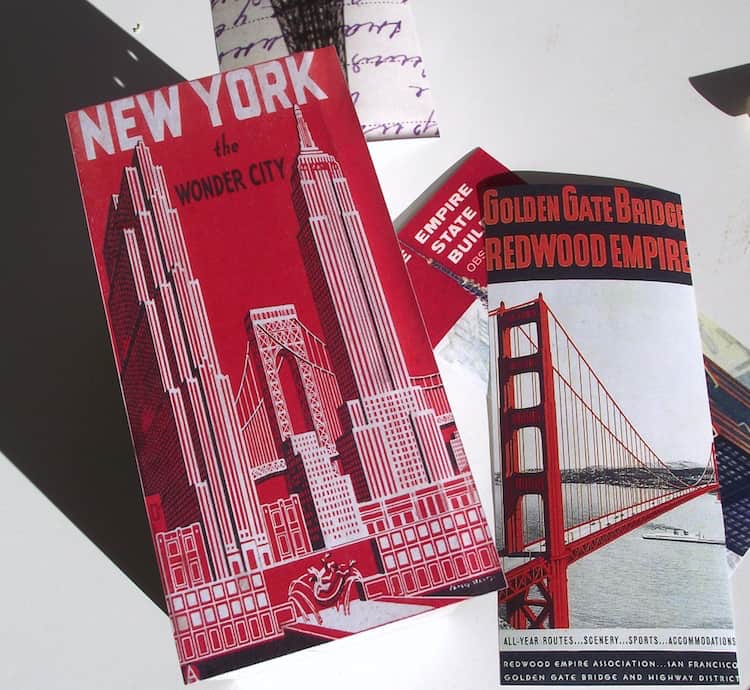
When the glue was dry I removed the screws and attached my images to the sides using Mod Podge. I let it dry and then added a sealer coat of Mod Podge for good measure. After the sealer coat dried I trimmed away any excess (I always cut my paper a little bigger than I need just to be safe).
Step Six – Poking the Holes
Here is where I got high tech. I took a toothpick and poked through the paper into the holes in the steel plates. I just stuck it in and wiggled it around a bit to make the opening as wide as possible.
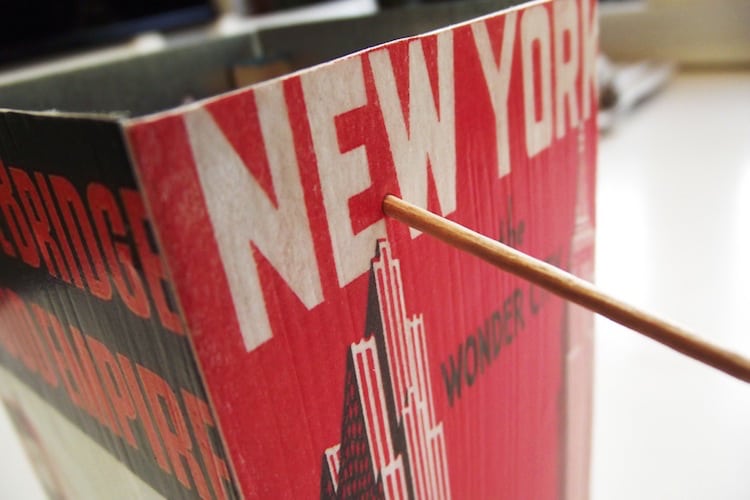
I added my battery operated tea lights (I would advise against using actual candles – the heat generated and the metal sides seems like a bad combination).
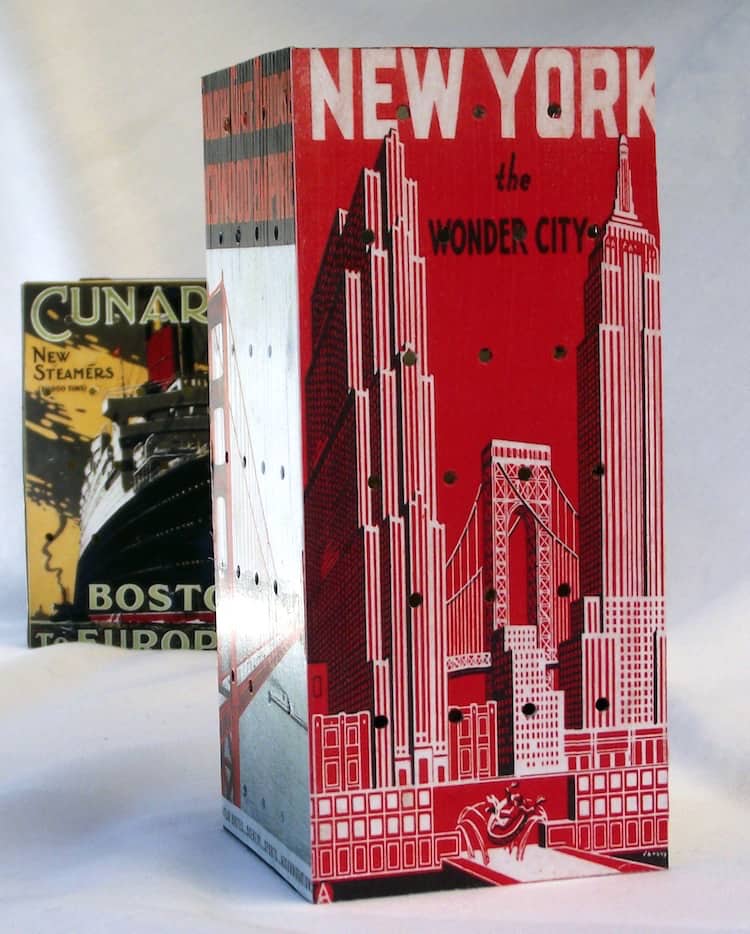
And then I made another one because it was so easy:

I had a little difficulty getting a good “night time” shot so my apologies for the quality of this photo, but it gives you a sense of what they look like with candles blazing!
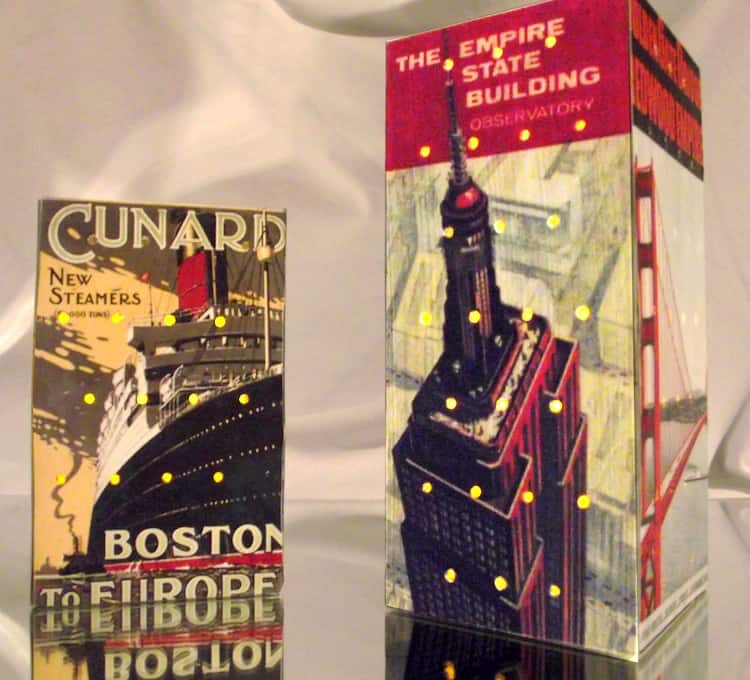
I really like how these came out and I spent a total of about $7.00 (the tea lights are from the dollar store).
Further Thoughts:
All of my projects are a journey of discovery. After I’m done I always think of ways I could do it better.
- In this case I realized that I could have used the screw trick from Step Four in Step Three –
- Attaching the Dowels. Just apply the glue, lay the metal down and screw it into place until it dries. Much simpler.
- Also I realized that I should have painted the inside (between Step 3 and 4) as it wasn’t too attractive when all was said and done. Since it was too late to paint I instead cut a square of Plexiglas the same size as my base, hand sanded one side of it to make it opaque and dropped it in the top of the luminary. It looks great and gives it a nice, finished look.
I like this luminary project because the possibilities are endless. As I mentioned, the steel plates come in all kinds of sizes.
You can use images like I did or left-over pieces of scrapbook paper, or newspaper, or book pages or music. You can do each side differently as I did or you can wrap the whole thing at once.
If you’ve got a drill press you can drill even more holes through the sides to create more light.
I hope you enjoyed making a luminary and that it sparks your creative fire. Feel free, as always, to ask questions – I will monitor the comments section. I’d also love for you to visit these other related posts:





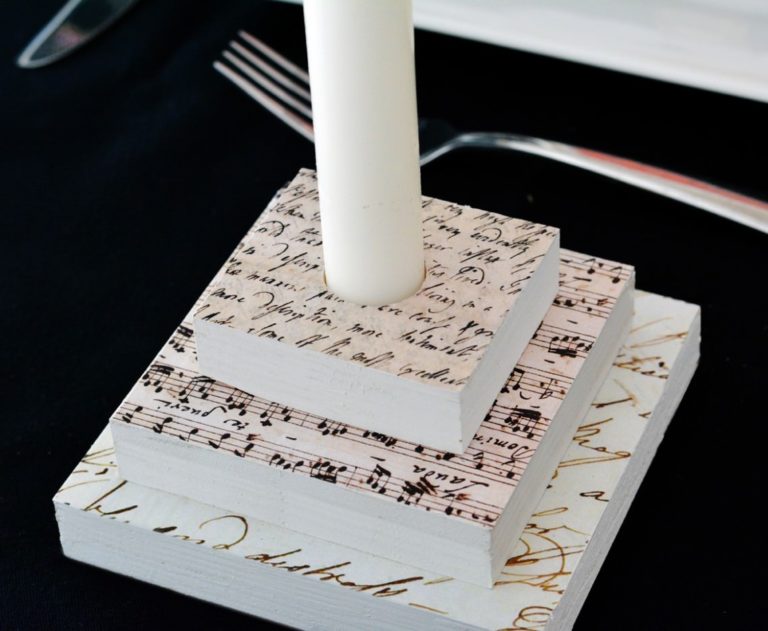

David, this looks awesome!
Great idea!
AWESOME! Where did you get those beautiful papers?
Love your choice of pictures/paper. This looks so cool! Thinking about making one with my fav. LP (long play record) covers. Thanks for the inspiration!
What a great idea! Thanks for sharing!
Thanks Walter!
SuzieB – the images are scans from my collection of vintage post cards and stuff. However, I’ve seen the NYC images on calendars as well.
And Janine – record covers would be awesome! Brilliant idea!
Best,
David
Nice project as usual David! Great tutorial…
Amy, I LOVE this idea!!! I have some old Halloween movie posters that got a little beat up in our last move. I could make some fun Halloween luminaries with them!
Thanks for the tutorial! I will be sharing a link on my blog tomorrow!
These look super cool and I can think of so many ways to use them!
Thanks
Love it …where did you get ur images from..got that 3d effect..awesome !!!!!!
I’m also a big fan of mood lighting. I have lots of different lamps at different watts sprinkled throughout the house. Great project.
Love this!
really great idea, and one could even leave a panel or two without the images for a more industrial look…..
thanks so much for sharing on craft Schooling sunday!